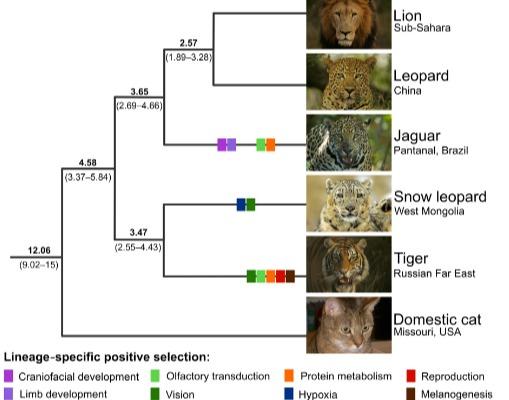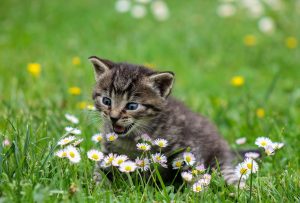One of the sections of your Basepaws Cat DNA report is the Wild Cat Index. This section of the report reveals a few secrets about your cat’s wild and wonderful ancestry and gives you an insight into the evolution of your very own home tiger.
It’s the most fun part of the report (read: genetics plays a small part here) but we include it to highlight just how pawsome felines of all sizes are. Here is what you need to know about feline evolution in order to understand your Basepaws Wild Cat Index.
Feline evolution
Your cat might love a soft couch and fancy canned food, but all it takes is the flutter of a bird or the twinkle of a laser pointer to remind your cat that she is a true born hunter. Cats were first adopted by humans only 10,000 years ago and your cat’s DNA is only a pounce away from its wild ancestors. Every domestic cat has more in common with some wild cousins than others, however, due to evolution and the random chance of inheritance.
All living cats, big and small, shared the same ancestors around 10 million years ago. The progressive evolution of the common ancestor eventually led to the development of 37 modern cat species. According to ancient feline DNA analysis, the most recent wild ancestor of domestic cats in particular seems to be the African wildcat (lat. Felis silvestris lybica) (Ottoni et al, 2017).
As the evolution of cats progressed, some cats inherited more or less DNA from their common ancestors. This is because every cat inherits 50% of their DNA from the mother and 50% from the father. However, which part of the mother’s or father’s DNA is inherited is completely random, thus allowing each and every kitten to be completely genetically unique.

Figure by Figueiró, H. V., et al. (2017)
Your cat is therefore more related to some species of wild cats than others. The closest relatives of domestic cats are the African and European wild cats, and the Chinese desert cat. This means that your cat shared ancestors with these wild cats much more recently than with their most distant relatives (lions, jaguars, tigers and leopards).
However, even though the feline family tree diverged around 10 million years ago, domestic cats and their long-distanced relative still share a lot of DNA. Domestic cats and tigers, for example, have 95.6% of their DNA in common.





